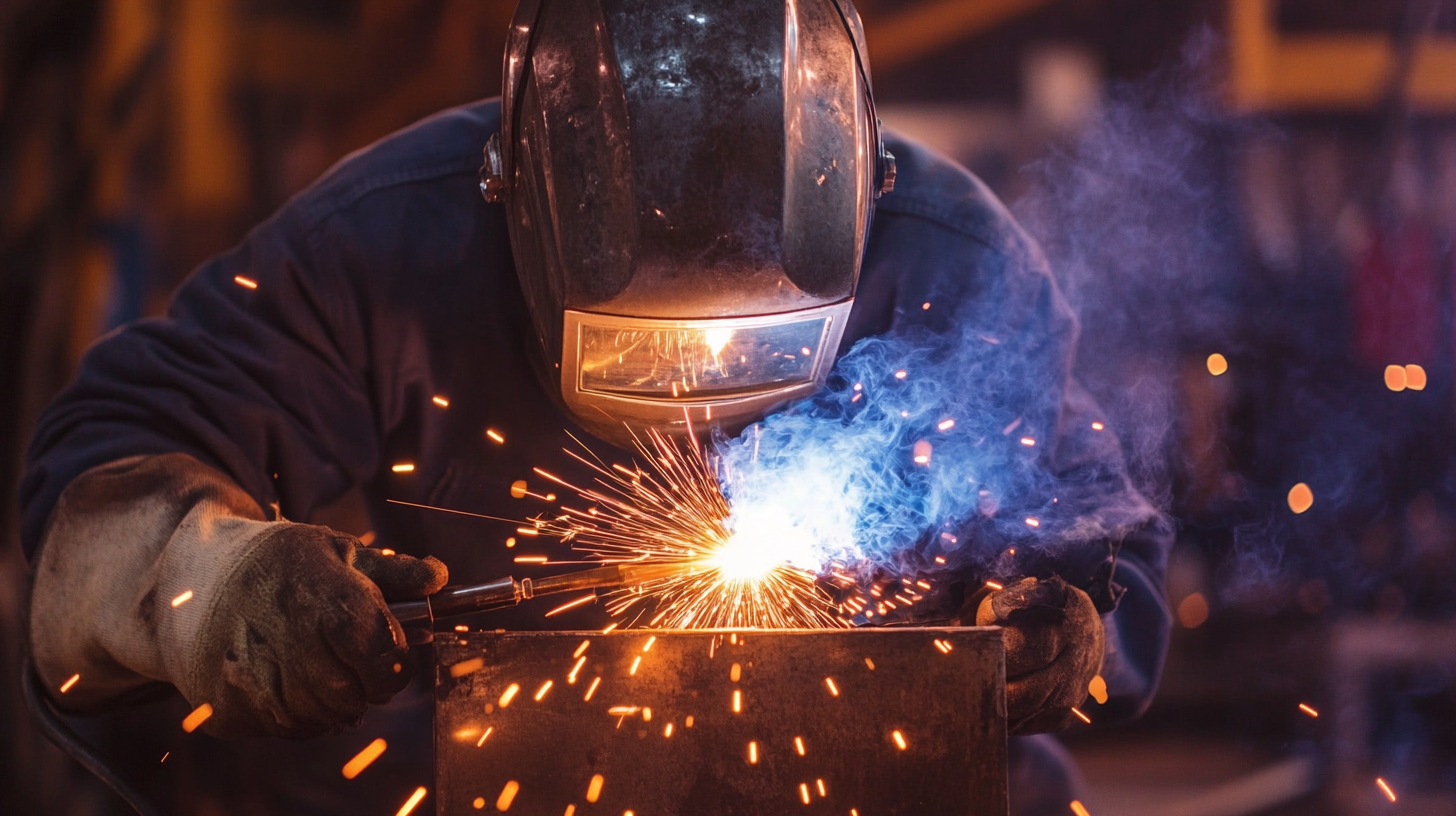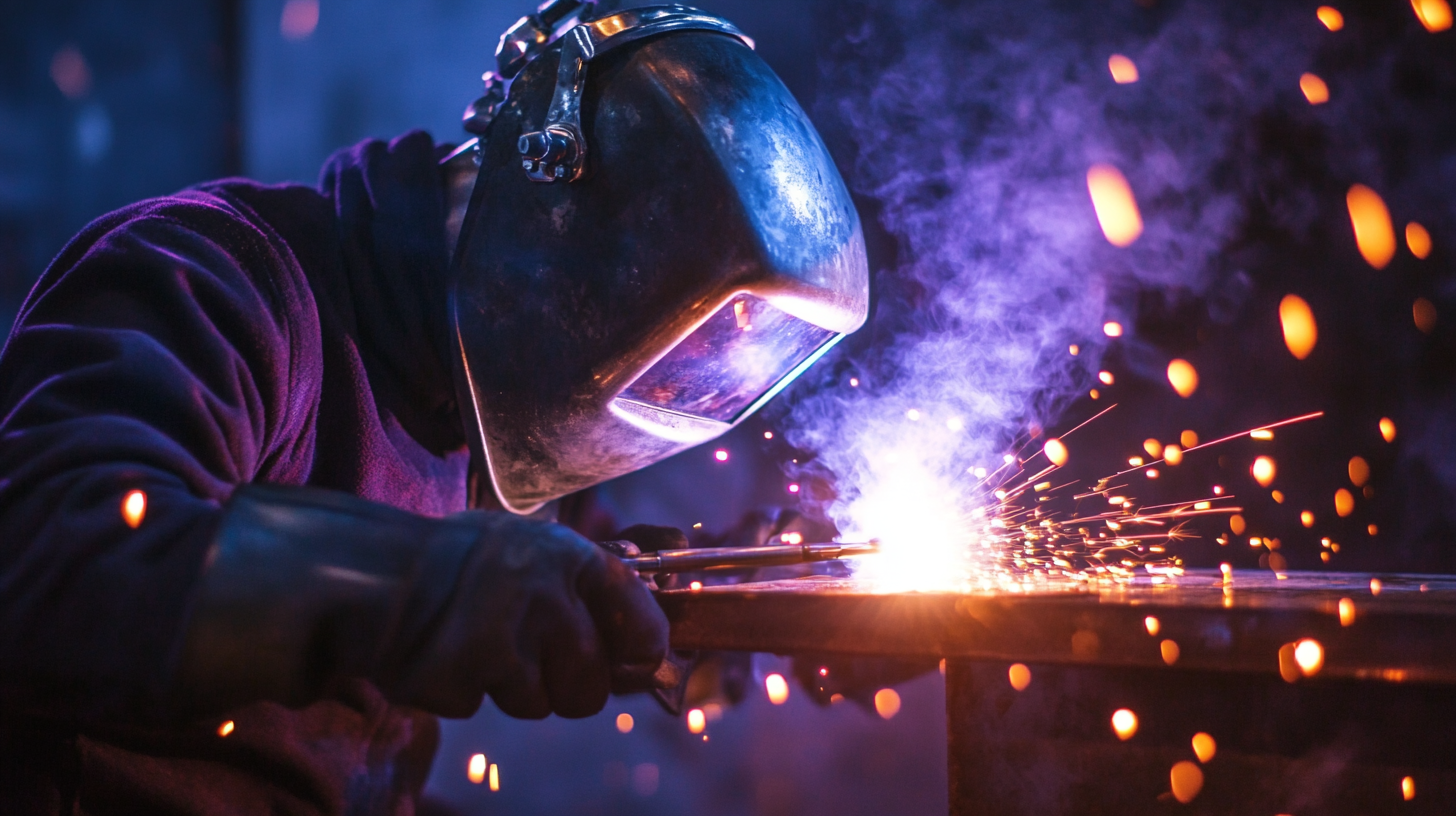Stick welding, also known as Shielded Metal Arc Welding (SMAW), remains a fundamental technique in the welding industry, accounting for approximately 40% of all welding applications, according to the American Welding Society. This method is favored for its simplicity, versatility, and effectiveness in various environments, including outdoor and remote locations. Recent industry reports highlight that Stick Welding Welds are not only cost-effective but also exhibit high strength and durability, making them ideal for heavy-duty construction and repair tasks. As the demand for skilled welders continues to rise, mastering the art of stick welding through the best techniques is essential for achieving perfect welds that meet industry standards. In this blog, we will explore top strategies and tips to enhance your stick welding skills, ensuring both quality and efficiency in your projects.

Stick welding, also known as Shielded Metal Arc Welding (SMAW), is a fundamental skill that every welder should master, especially beginners. Understanding the basics of this technique is crucial for producing strong and reliable welds. The process involves creating an electric arc between a consumable electrode and the workpiece, which melts both to form a robust bond. One of the first steps is to choose the right electrode type and size, as this directly affects the strength and quality of your weld. Familiarizing yourself with different electrode classifications helps in selecting the correct one for your specific welding application.
Safety is another critical aspect for beginners to grasp. Proper personal protective equipment (PPE) such as welding gloves, helmets, and protective clothing is essential to guard against sparks and harmful UV radiation. Moreover, mastering the correct welding angles and travel speed can significantly enhance your skills. Beginners should practice maintaining a steady hand and controlling the weld puddle, which is vital for ensuring consistent penetration and preventing defects. By focusing on these fundamental techniques and safety protocols, newcomers can lay a strong foundation for their stick welding journey.
When engaging in stick welding, prioritizing safety is paramount to ensure a risk-free working environment. According to a report by the National Institute for Occupational Safety and Health (NIOSH), nearly 40% of welding-related injuries are due to inadequate safety practices. This underscores the necessity of adhering to essential safety protocols, such as wearing the appropriate personal protective equipment (PPE) including helmets, gloves, and flame-resistant clothing. In addition, keeping the workspace clean and free from clutter minimizes the risk of accidents.
**Tip:** Always have a fire extinguisher readily accessible in the welding area and familiarize yourself with its operation before starting any welding task.
Proper ventilation is another critical aspect of safety in stick welding. The fumes generated during welding can contain hazardous materials, making it vital to have adequate airflow to prevent exposure. The American Welding Society recommends using local exhaust ventilation or fans to streamline airflow, safeguarding the welder's health.
**Tip:** Implement regular breaks to step outside for fresh air, which helps mitigate exposure to harmful fumes, ensuring that the welder remains alert and focused on the task.

Choosing the right electrode is crucial for achieving optimal stick welding performance. When selecting an electrode, it's essential to consider the type of materials you'll be welding. For instance, if you're working with mild steel, E6011 or E6013 electrodes are excellent choices, providing good penetration and a smooth finish. On the other hand, for stainless steel, E308L is preferred for its versatility and strong welds.
Another tip for maximizing your stick welding performance is to match the electrode diameter to the thickness of the materials. Using a smaller diameter electrode can help achieve better control on thinner materials, while larger electrodes are suited for thicker pieces, allowing for faster travel speeds and deeper penetration. Additionally, ensure that the electrode is stored properly; a contaminated or damp electrode can lead to welding defects, so always keep them dry and clean before use.
Finally, pay attention to the welding positions. Certain electrodes perform better in specific positions, such as flat or horizontal welding. Understanding the limitations and advantages of your chosen electrode will enable you to adapt your technique and settings for the best possible results. By selecting the right electrode and tailoring your approach, you can elevate your stick welding skills to perfection.
This bar chart illustrates the performance characteristics of different electrode types used in stick welding. The data includes the most common electrode types, their diameter, and the recommended current settings for optimal performance.
Stick welding, while a fundamental skill in the welding industry, often comes with its own set of challenges that can lead to common mistakes. According to a 2021 American Welding Society report, improper technique accounted for nearly 30% of all welding defects observed in field inspections. One prevalent issue is the angle of the electrode; holding the electrode at the wrong angle can result in weak welds and burn-through. Ensuring the correct angle, typically around 15 to 30 degrees, can significantly improve the quality of your welds and reduce the likelihood of defects.
Another frequent mistake among novice welders is insufficient cleaning of the base materials. Data from the National Institute for Welding Statistics indicate that contaminants such as rust, oil, and paint can reduce weld strength by up to 50%. To avoid this, ensure that the surfaces are cleaned and free of impurities before starting the welding process. This step, though often overlooked, is crucial in achieving the strong, clean welds that professionals strive for. By addressing these common pitfalls, welders can enhance their skills and produce work that meets industry standards and specifications.
| Technique | Description | Common Mistake | How to Avoid |
|---|---|---|---|
| Proper Electrode Angle | Maintaining a 15-30 degree angle for better penetration. | Inconsistent angle leading to weak welds. | Practice controlling your hand position. |
| Travel Speed | Moving the electrode at a steady pace suitable for the material. | Moving too fast or too slow. | Adjusting speed based on feedback from the weld bead. |
| Electrode Diameter | Choosing the right diameter for the job at hand. | Using too large or too small electrodes. | Refer to welding guides for proper size selection. |
| Arc Length | Maintaining a consistent arc length for stable welding. | Too short or too long arcs causing defects. | Practice keeping the arc length visually and tactilely steady. |
| Clean Base Metal | Ensuring the weld area is free from rust, grease, and contaminants. | Welding on dirty or contaminated surfaces. | Always clean the metal surface before welding. |
Stick welding, also known as shielded metal arc welding (SMAW), is a powerful and versatile technique that can yield strong, reliable welds when mastered. One of the key advanced techniques involves controlling the travel angle and speed of your electrode. For optimal penetration and bead appearance, maintain a 10 to 15-degree travel angle away from the direction of weld progression. Adjusting your speed is equally crucial—too fast may lead to weak welds, while too slow can create excessive heat and burn-through.
Another important tip for achieving consistent results is to pay close attention to the electrode type and size. Different materials and thicknesses require specific electrodes; for instance, using 6010 or 6011 for deep penetration in dirty or rusty materials can make a significant difference. Additionally, maintaining a clean surface before welding is essential, as contaminants can hinder the bonding process. By combining these techniques and consistently practicing them, welders can effectively enhance their skill set, leading to stronger and more reliable welds.

